Bearded dragons are among the most popular reptile pets in the world, and thanks to selective breeding, there are now dozens of stunning morphs available—each with its own unique colors, patterns, and scale textures. But behind the visual appeal lies a growing concern that many new and even experienced reptile owners overlook: bearded dragon morphs but bad effects.
While these designer morphs may look exotic, they often come with health risks that aren’t immediately obvious. From shedding problems to immune system weaknesses, bearded dragon morphs but bad effects can seriously impact the well-being and lifespan of your pet. In this article, we’ll explore the hidden side of morph breeding, discuss which variations carry the most risk, and help you make informed decisions when choosing a bearded dragon for your home.
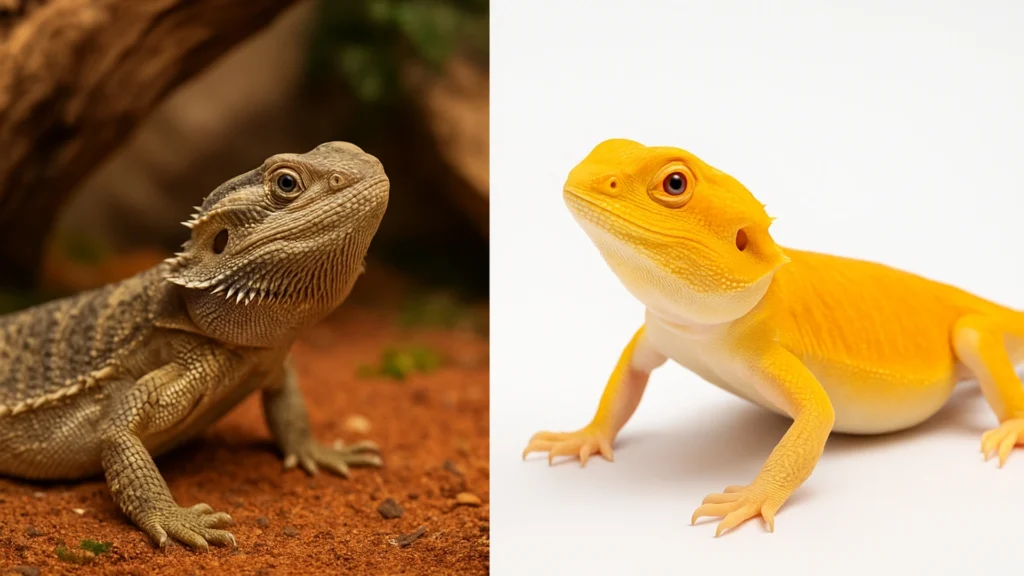
Bearded Dragon Morphs But Bad Effects You Shouldn’t Ignore
What Are Bearded Dragon Morphs and Why They’re Popular?
Reptile morphs are genetic variations that change a reptile’s appearance without altering its species. In bearded dragons, these morphs affect traits like color, pattern, scale texture, and even eye color.
These differences are produced through selective breeding. Breeders match dragons with specific traits to create offspring that display rare or visually striking features.
For example, a Silkback morph has smooth, soft skin and lacks the typical rough scales. A Translucent morph may have bluish eyes and partially see-through skin.
These unique looks appeal to pet owners and collectors. However, it’s important to remember that morphs aren’t just about appearance.
Many morphs result from recessive genes or inbreeding. This can lead to unintended health problems. That’s where concerns about bearded dragon morphs but bad effects arise.
Not all morphs are risky, but some types carry a higher chance of genetic complications. That’s why thorough research is essential before choosing a designer morph.
How Bearded Dragon Morphs Are Created Through Selective Breeding
Morphs in bearded dragons do not occur naturally in the wild. They are the result of controlled selective breeding by reptile enthusiasts and breeders.
This process involves pairing two dragons with specific genetic traits—such as unique coloration, reduced scale texture, or translucence. The goal is to produce offspring that display these traits more vividly.
Over time, through many generations, breeders can enhance or isolate certain characteristics. For instance, to create a Silkback morph, they select dragons that carry the recessive gene responsible for scale reduction. When two carriers are bred, some offspring will fully express the trait, resulting in a smooth-skinned Silkback.
Selective breeding can lead to stunning visual results. However, it also carries risks. Repeatedly pairing closely related dragons increases the chance of genetic defects, weak immune systems, and metabolic problems.
This is a major factor behind bearded dragon morphs but bad effects in captive populations. Some breeders may prioritize appearance over health, leading to dragons that are more prone to illness and complications.
Understanding how morphs are created is key to choosing a healthy, ethically bred pet.
Bearded Dragon Morphs But Bad Effects Seen in Silkback, Zero & Translucent Types
Among the many bearded dragon morphs available today, a few stand out for their unique appearance and popularity. This is especially true among first-time buyers.
These include Leatherback, Silkback, Translucent, and Zero morphs. Each has distinctive physical traits and potential health concerns.
Leatherback morphs have smoother scale textures than standard dragons. This gives them brighter colors and a sleek appearance. However, it can also make them more sensitive to changes in their environment.
Silkbacks take it a step further. They lack scales completely. Their skin is extremely smooth but very delicate, making them prone to dehydration, shedding issues, and injury.
Translucent morphs often have bluish eyes and semi-transparent skin when they’re young. They are visually stunning. However, they may carry recessive traits that affect bone development or immune function.
Zero morphs lack any visible body patterns or color. This gives them a ghost-like appearance. Though eye-catching, some Zero dragons are linked to genetic weaknesses due to selective breeding.
These morphs are beautiful, but they play a big role in the concerns surrounding bearded dragon morphs but bad effects. Their striking traits sometimes come at the cost of long-term health and lifespan.
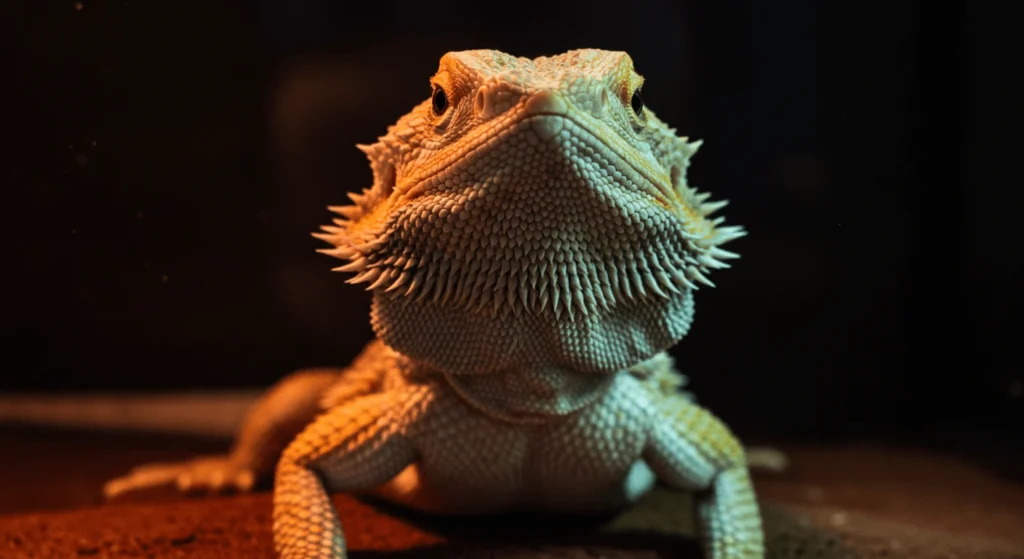
Health Risks of Bearded Dragon Morphs But Bad Effects
Bearded dragon morphs have become very popular in the reptile pet community—and for good reason. Many owners are drawn to them for their vibrant colors, unique patterns, and exotic traits that set them apart from standard dragons.
A morph like a bright citrus, a ghostly Zero, or a scale-less Silkback can instantly grab attention. These dragons often feel like rare, one-of-a-kind pets.
For some reptile lovers, owning a designer morph is a way to stand out. It also reflects their deep appreciation for reptile genetics. Others simply enjoy having a dragon with features rarely seen in nature—almost like a living work of art.
But this focus on appearance can overshadow important health concerns. In the pursuit of beauty, many owners overlook the bearded dragon morphs but bad effects that may come with genetic modifications.
While the desire for uniqueness is understandable, it’s important to balance visual appeal with long-term health, care complexity, and ethical breeding.
Before choosing a morph over a standard dragon, ask yourself not just how it looks—but how well it can live.
Genetic Causes Behind Bearded Dragon Morphs But Bad Effects
How Recessive Genes Can Lead to Morph Health Issues
Silkback bearded dragons are among the most visually striking morphs. But they also come with some of the most serious health concerns.
Unlike standard or Leatherback dragons, Silkbacks are completely scale-less. This gives them a smooth, glossy appearance. However, the lack of scales creates a major problem—difficulty with skin shedding.
In normal dragons, rough scales help loosen and remove dead skin during shedding. Without those scales, Silkbacks often struggle to shed properly. This can lead to retained shed, especially around the eyes, toes, and tail. If not monitored and treated, it may cause circulation issues, infections, or even loss of digits.
Silkbacks also have extremely sensitive skin. They are more prone to cuts, dehydration, and UVB burns. Because of this, they need extra humidity and gentle handling.
These challenges clearly illustrate the bearded dragon morphs but bad effects that can come from selective breeding. The pursuit of rare looks often compromises natural functions.
Silkbacks can thrive with expert care. But they are not a good choice for beginner reptile owners. Their delicate nature makes them a high-maintenance morph with special health needs.
Inbreeding and the Rise of Bearded Dragon Morphs But Bad Effects
Translucent bearded dragons, often called “Trans” morphs, are known for their semi-transparent skin and striking blue or dark eyes. These features are most prominent in hatchlings. The look comes from selective breeding to enhance a recessive gene.
While these dragons are visually unique, they may face certain health issues. Eye sensitivity and genetic fragility are among the most common concerns.
Many owners say their Trans morphs react poorly to bright light, especially UVB. UVB lighting is crucial for proper bone development. These dragons may show glassy eyes or enlarged pupils. Some even appear stressed or uncomfortable in well-lit environments.
There are also concerns about weak immune systems and a risk of metabolic bone disease. These issues often stem from the same genes that create the translucent look. This is a clear case of bearded dragon morphs but bad effects, where beauty can come at a cost.
Not all Trans dragons develop health problems. But owners must understand the risks and give them special care.
Zero Morph Dragons and Genetic Weaknesses
Zero morphs are among the most visually unique bearded dragons, known for their lack of color and pattern. These dragons display a completely pale or silver-white appearance, giving them a ghost-like look that stands out dramatically from other morphs. While their appearance is stunning to many reptile enthusiasts, the Zero morph also raises concerns about genetic fragility and potential health issues.
The Zero morph is a recessive trait, meaning both parents must carry the gene to produce this appearance. As a result, Zero dragons are often bred from limited gene pools, increasing the likelihood of inbreeding. This can lead to a higher risk of developmental defects, weakened immune systems, and reproductive problems—especially if breeders prioritize appearance over genetic health.
Although not every Zero morph will have medical issues, the risk is significantly higher compared to standard bearded dragons. These challenges highlight yet another aspect of bearded dragon morphs but bad effects, where visual traits may come at the cost of long-term vitality.
If you’re considering a Zero morph, it’s essential to work with a reputable breeder who prioritizes health testing and genetic diversity over looks alone.
Zero dragons are often bred from limited gene pools, increasing the likelihood of inbreeding. This can lead to a higher risk of defects and immune issues—especially when breeders prioritize looks over health. Read more here.
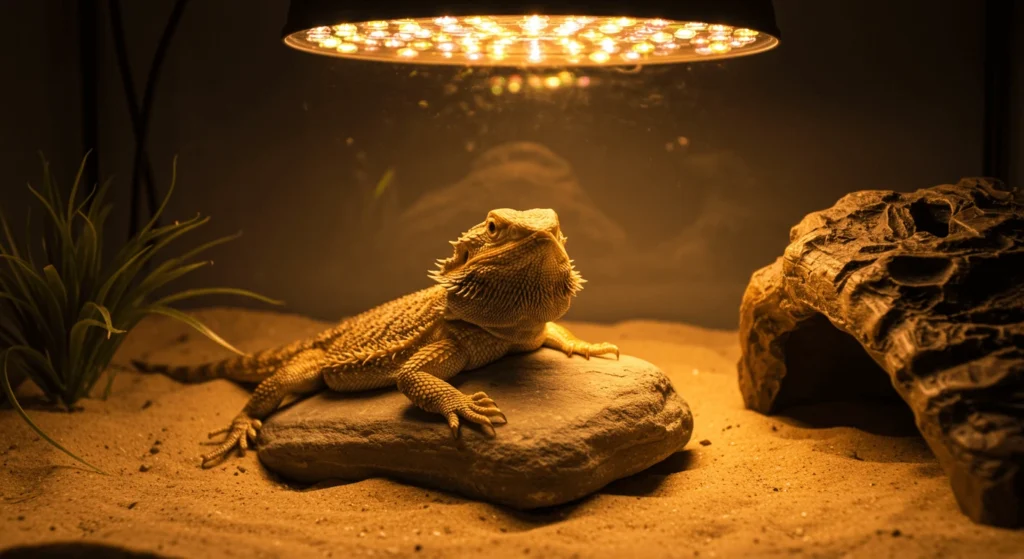
cale Texture Loss and Skin Protection Problems
Bearded dragons evolved with rough, spiky scales for a reason. These scales act like natural armor, shielding their bodies from injury, sunburn, and harsh environments. But in many modern morphs—especially Silkbacks and Leatherbacks—this protection is reduced or missing.
While their smoother skin looks attractive, it creates several issues. These dragons are more prone to skin damage, UVB burns, and abrasions. Their skin doesn’t resist heat and light as well as standard dragons.
They may also struggle to retain moisture and dehydrate faster in dry enclosures. Shedding becomes more difficult too. Without rough scales, shed skin may stay stuck, leading to circulation problems or infections.
These challenges highlight bearded dragon morphs but bad effects, where appearance comes at the cost of function. Owners of such morphs must be extra cautious with humidity, lighting, and overall habitat setup.
Are Bearded Dragon Morphs But Bad Effects Avoidable with Proper Care?
Recessive Traits and Inbreeding Consequences
Many of the most eye-catching bearded dragon morphs—like Translucent, Silkback, and Zero—are created from recessive genes. For these traits to appear, both parent dragons must carry the same recessive gene. That may sound simple, but the genetic process is more complex and risky.
To produce rare morphs consistently, some breeders use inbreeding. This means mating dragons that are closely related to enhance specific traits. Unfortunately, it raises the risk of genetic mutations, weak immune systems, and physical deformities. Dragons from limited bloodlines may suffer from stunted growth, bone issues, or even early death.
These are classic examples of bearded dragon morphs but bad effects, where visual beauty comes at the cost of health. Not all morphs are unhealthy, but poor breeding choices can cause lasting harm.
Good breeders avoid inbreeding and keep their gene pool diverse. Before buying, always ask about your dragon’s genetics—especially when choosing a morph.
Immune Weakness from Overbreeding
Overbreeding is a hidden but powerful concern in the world of designer bearded dragon morphs. In the pursuit of eye-catching appearances, some breeders repeatedly pair dragons within the same bloodline—drastically reducing genetic diversity. While the visual results may be stunning, the trade-off often includes a weakened immune system and higher risk of illness.
Dragons from overbred lines may struggle to fight off routine infections, parasites, or respiratory issues. Even slight changes in humidity or temperature can stress these morphs, triggering poor appetite, fatigue, or delayed healing. These are classic signs of compromised immunity—one of the most unfortunate side effects of bearded dragon morphs but bad effects.
Morphs like Silkbacks and Translucents are especially vulnerable, as they’re often overproduced to meet visual demand. The key to avoiding these problems is choosing a morph from a responsible, health-focused breeder—one who prioritizes genetic diversity, testing, and overall vitality over appearance alone. This single choice can dramatically impact your dragon’s long-term health and quality of life.
Expert Insights: Bone Health Risks in Bearded Dragon Morphs
Metabolic Bone Disease (MBD) remains one of the most serious and preventable conditions in captive bearded dragons. It develops when calcium is poorly absorbed or metabolized—leading to soft bones, tremors, deformities, or even paralysis. Although MBD can affect any dragon kept in poor conditions, certain morphs are naturally more prone to it.
Silkbacks and Translucents, for instance, may have thinner skin or altered calcium processing due to genetic traits. When these morphs are overbred, the risk increases—leading to dragons with fragile bones or poor vitamin D3 synthesis, both essential for strong skeletal development.
Add in inadequate UVB lighting, a calcium-poor diet, or inconsistent supplementation, and the danger multiplies. These bad effects linked to bearded dragon morphs often catch new owners off guard, especially if they’re unaware of the special care needs some morphs require.
To protect your pet, ensure proper UVB exposure, supplement regularly with calcium + D3, and provide a balanced, nutrient-rich diet. With consistent care and early attention to signs of weakness, many of these issues can be prevented—helping your morph thrive for years to come.
Real-Life Cases of Morph Dragons with Health Complications
Calcium and UVB lighting are essential components of proper bearded dragon care, but they play an even more critical role in the health of morphs with genetic sensitivities. Calcium is necessary for strong bones, proper muscle function, and overall development. UVB lighting, on the other hand, helps dragons synthesize vitamin D3, which allows their bodies to absorb and use calcium effectively.
In morphs like Silkbacks and Translucents, the importance of these elements is amplified. These dragons may have thinner skin, making them more vulnerable to UVB burns or absorption issues, while others may metabolize calcium less efficiently due to inherited genetic weaknesses. Without proper care, these morphs are at a much higher risk of Metabolic Bone Disease (MBD) and other calcium-related disorders.
Unfortunately, many new owners aren’t aware that certain morphs require more precise UVB exposure and diligent calcium supplementation to stay healthy. This is another example of how bearded dragon morphs but bad effects can manifest through everyday care routines.
To protect your dragon, always use a high-quality UVB bulb, provide calcium with D3 regularly, and ensure they get proper basking opportunities daily.
How to Avoid Bearded Dragon Morphs But Bad Effects When Buying
Lifespan Concerns Across Bearded Dragon Morphs
While a healthy, well-cared-for bearded dragon can live 10 to 15 years in captivity, lifespan can vary significantly depending on the morph type—especially when genetic health has been compromised through selective breeding. Morphs like Silkbacks, Translucents, and Zero dragons are often bred for appearance, but this can come at the cost of long-term vitality and resilience.
Silkbacks, for instance, are more prone to skin injuries, shedding problems, and dehydration, which can lead to chronic stress and illness that shortens their lifespan. Translucent morphs may experience weakened bone structure or sensitivity to light, affecting their overall health and quality of life over time. Zero morphs, due to inbreeding practices, may be more susceptible to immune deficiencies and reproductive challenges.
These concerns reinforce the broader issue of bearded dragon morphs but bad effects, where aesthetic appeal can unintentionally lead to a reduced life expectancy if care isn’t carefully tailored to the morph’s unique needs.
To give any morph the best chance at a full life, it’s crucial to provide specialized care, proper lighting, high-quality nutrition, and regular vet checkups—especially for more delicate morphs.
Is the Visual Appeal Worth the Potential Health Risks?
There’s no denying that bearded dragon morphs are visually captivating. From the silky sheen of a Silkback to the ghostly elegance of a Zero, these designer dragons stand out in any enclosure. For many reptile keepers, the unique look and rarity of a morph is a big part of the appeal. However, the real question remains: are the risks worth it?
While morphs offer aesthetic variety, they can also come with hidden health complications, higher maintenance needs, and shortened lifespans—all examples of bearded dragon morphs but bad effects. Owners may find themselves dealing with frequent vet visits, specialized care requirements, and emotional stress when health issues arise unexpectedly.
If you’re an experienced keeper who’s prepared to provide the extra attention and care these morphs may need, the beauty might be worth the risk. But for beginners or those seeking a low-maintenance pet, a standard or well-bred classic morph may be a safer and more rewarding choice.
Ultimately, responsible ownership means balancing visual appeal with animal welfare—ensuring that the dragon’s health always comes before aesthetics.
Best Practices to Prevent Bearded Dragon Morphs But Bad Effects
When it comes to choosing a bearded dragon morph, expert advice from reptile veterinarians and experienced breeders is invaluable. These professionals have seen both the beauty and the consequences of morph breeding—especially when it comes to health complications tied to certain genetic traits.
Reptile vets often caution new owners about the increased risks associated with morphs like Silkbacks and Translucents, which may suffer from sensitive skin, shedding issues, and calcium absorption problems. They emphasize the importance of proper UVB lighting, balanced nutrition, and proactive health monitoring to prevent issues like metabolic bone disease or dehydration.
Responsible breeders echo similar concerns, encouraging buyers to prioritize genetic health over appearance. Ethical breeders will provide health histories, explain morph-specific care needs, and avoid inbreeding practices that lead to fragile dragons.
This collective expert insight reinforces the growing awareness of bearded dragon morphs but bad effects, and highlights the need for informed decisions. Whether you’re a first-time reptile keeper or a seasoned enthusiast, following advice from vets and trusted breeders can help you choose a morph that’s not only beautiful—but also healthy and long-lived.
Real Case Studies: Owner Experiences with Morph Complications
Many bearded dragon owners who’ve purchased morphs share mixed experiences—some positive, others cautionary. For instance, owners of Silkbacks often report issues like retained shed and sensitive skin, requiring daily care routines and frequent misting. Others who’ve owned Translucent morphs mention struggles with UVB sensitivity or sluggish growth. One case study from a reptile forum highlighted a Zero morph that developed early-onset metabolic bone disease despite proper lighting and supplements—suggesting underlying genetic fragility. These stories emphasize that bearded dragon morphs but bad effects aren’t just theoretical—they’re real challenges faced by everyday pet owners trying to give their dragons a healthy life.
Choosing Healthy and Ethically Bred Bearded Dragon Morphs
Questions to Ask Reptile Breeders
Choosing a bearded dragon morph is about more than just looks—it’s about long-term health and ethical breeding. When purchasing from a breeder, asking the right questions can help you avoid the risks associated with bearded dragon morphs but bad effects.
Start by asking:
- “What is the genetic history of this morph?” Reputable breeders should provide lineage details and disclose if any inbreeding was involved.
- “Have the parents shown any health issues?” This helps identify potential genetic weaknesses.
- “What morph-specific care does this dragon need?” Morphs like Silkbacks and Translucents require special attention, and honest breeders will inform you of those needs.
- “Do you offer a health guarantee?” Reliable breeders often back their animals with short-term health guarantees or vet checks.
- “How often do you breed your dragons?” Overbreeding can lead to health problems in offspring and reflects poor breeding ethics.
Asking these questions not only protects you—it also supports breeders who care about animal welfare. The more informed you are, the better your chances of finding a healthy, ethically bred morph that will thrive in your care.
Warning Signs to Watch for in Hatchlings
When purchasing a bearded dragon morph, especially as a hatchling, it’s crucial to know what red flags to look for. Morphs are often bred for appearance, which can sometimes hide underlying health problems linked to genetic weaknesses. Recognizing early warning signs may help you avoid dealing with the more serious consequences of bearded dragon morphs but bad effects later on.
Look for hatchlings that are alert, active, and responsive to movement. Signs of trouble include lethargy, weak limbs, difficulty lifting the head, or a noticeable lack of appetite. Physical deformities like curved spines, stubby tails, or swollen joints may indicate poor genetics or early signs of metabolic bone disease (MBD). Watch for dull or discolored skin, which could point to shedding issues or poor hydration—especially common in Silkbacks.
Also observe their eyes and breathing: sunken eyes, labored breathing, or constant mouth-gaping may signal internal health issues or stress.
Buying from a responsible breeder who allows you to observe the hatchling’s behavior and condition before purchasing can make all the difference in choosing a healthy pet that will thrive under your care.
Best Practices for New Owners of Exotic Morphs
Owning an exotic bearded dragon morph—such as a Silkback, Translucent, or Zero—can be incredibly rewarding, but it also comes with added responsibility. These morphs often require specialized care due to their increased sensitivity and potential genetic health concerns. To avoid falling victim to the common bearded dragon morphs but bad effects, new owners must be proactive and well-informed from the start.
First, ensure your setup includes high-quality UVB lighting, as many morphs are more prone to calcium deficiencies and Metabolic Bone Disease (MBD). Use calcium with vitamin D3 several times a week, and provide a varied diet of live insects and calcium-rich greens.
Not sure which vegetables are safe? Can bearded dragons eat cucumbers? This detailed guide breaks down the risks, benefits, and how often to offer them safely.
Silkbacks in particular need higher humidity levels and daily misting to help with shedding and hydration.
Regularly monitor your dragon’s behavior, appetite, and physical condition. Morphs may require more frequent vet visits to catch early signs of illness. Finally, always purchase from a reputable breeder who can provide health records and morph-specific advice.
By following these best practices, new morph owners can enjoy the beauty of exotic dragons while supporting their long-term health and well-being.
Final Thoughts on Morph Safety and Responsibility
Bearded dragon morphs bring incredible diversity to the reptile world, offering colors and features not found in nature. However, with these visual enhancements come important responsibilities. As we’ve explored, bearded dragon morphs but bad effects can include health issues such as skin sensitivity, poor shedding, bone disease, immune deficiencies, and shortened lifespans—especially in morphs produced through careless or unethical breeding practices.
Choosing a morph should never be based on appearance alone. Responsible ownership means researching the specific needs of each morph, asking the right questions to breeders, and being prepared for a higher level of care if needed. It also means recognizing that some dragons—no matter how beautiful—may be more fragile and require a more experienced hand.
By prioritizing health, ethical breeding, and long-term well-being over looks, reptile keepers can help reduce the demand for poorly bred morphs and encourage healthier practices in the hobby. Whether you’re a new or seasoned keeper, making informed choices is the key to enjoying the unique charm of morphs—while giving your dragon the safe, healthy life it deserves.
Conclusion
Bearded dragon morphs are undeniably fascinating—from the shimmering scales of Translucents to the patternless elegance of Zero morphs. But as we’ve uncovered, their beauty can come with hidden costs. Health risks such as poor shedding, weakened immunity, UVB sensitivity, and genetic fragility are real concerns tied to certain morphs—making “bearded dragon morphs but bad effects” an essential topic for any responsible pet owner.
Choosing a morph shouldn’t be just about color or rarity. It should be a thoughtful decision based on the animal’s long-term health, your level of experience, and your ability to meet its specific care needs. By asking the right questions, sourcing your pet from ethical breeders, and staying informed, you can enjoy the uniqueness of a morph while ensuring your dragon lives a happy, healthy life.
In the end, the safety and well-being of your bearded dragon should always come first. Beauty fades—but responsible care leaves a lasting impact.

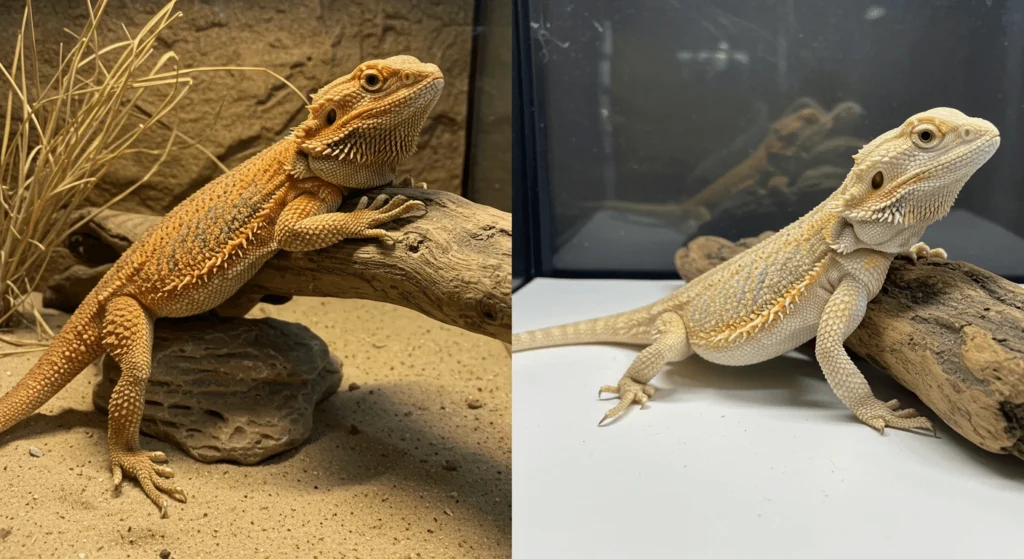
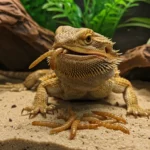

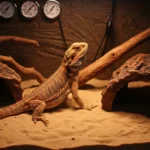
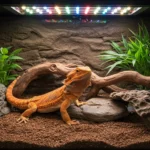
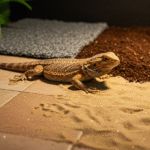
3 thoughts on “Bearded Dragon Morphs: Beautiful but with Side Effects”